Now You See It, Now You Don't – The Disappearance of Chinese Antique Furniture
PRIMITIVE - Friday, May 15, 2015 |
|
By Glen Joffe
It was not a good time to be around if you were a piece of antique furniture during China’s Cultural Revolution. You might have been burned to ashes or if you were lucky, thrown haphazardly into a large warehouse run by the Peoples Liberation Army. Such was the fate of a great deal of antique furniture during the ten years between 1966 and 1976. Many pieces were destroyed for being ‘bourgeois’ and representing the ‘old way of thinking’. What was not destroyed was often seized and confiscated by the government for redistribution to those in need. When the Cultural Revolution finally ended, many of these antiques were destroyed or scattered all over the country. Suddenly, one could find a Ming dynasty table serving as a chopping block for a farmer in a rural village. In a sense, the Cultural Revolution jump started the scarcity of Chinese antiques.
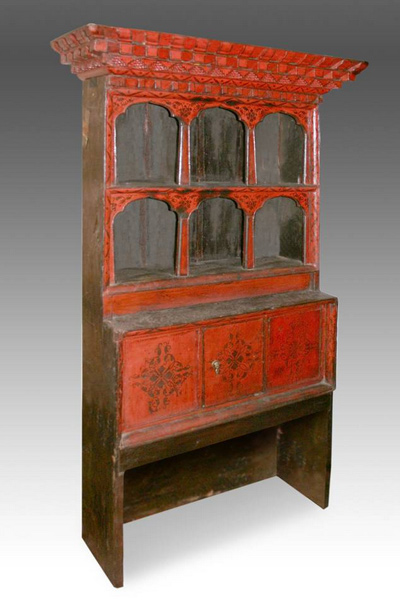 |
|
Parallels can be drawn between Tibetan and Chinese antique furniture, especially when considering human intervention; or more specifically, the net effect on Tibetan antique furniture caused by the annexation of Tibet by China and the subsequent Cultural Revolution. Tibetans, being traditionally semi-nomadic possessed very few personal pieces of furniture. Most Tibetan furniture was actually found in the monasteries, but coinciding with the Cultural Revolution in China many of these monasteries were destroyed. In an attempt to save the valuable furniture inside, many pieces were carted over the Himalayas to India by fleeing Tibetans. Others were actually sold to the Chinese. Just as Chinese antiques eventually re-emerged as a collectible for the western market, so too did Tibetan antique furniture, except on a much smaller scale because there were less pieces overall.
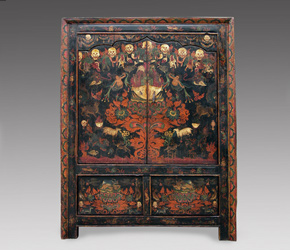 |
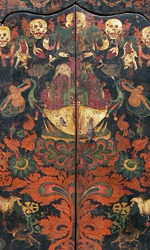 |
||
In post Cultural Revolution China, diplomats and businessmen from around the world began visiting as the country slowly opened its doors. Spectacular pieces were bought, restored, and shipped to faraway countries and the west grew increasingly interested in these beautiful, historical works. What began as a trickle of antiques turned into a river, and ultimately, into a flood as more and more furniture began to leave China. Despite years of frantic destruction, the Cultural Revolution could not eradicate thousands of years of Chinese history, culture and art. The sheer quantity of antique furniture emerging on the world market was staggering throughout the 1980s, 90s, and even into the early 2000s; however, as large a place as China may be, the amount of genuine antique furniture was limited. Even a flood is finite, and as time marched on supply decreased; and as original period pieces became harder to find values began to dramatically rise. This is true for both Tibetan and antique Chinese furniture. In an effort to create complete pieces, restoration artists began salvaging fragments from those that were incomplete, and finally, complete reproductions began to surface.
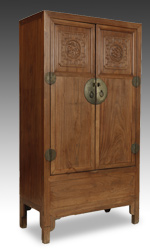 |
|
Almost thirty-five years ago, when PRIMITIVE first began importing antique Chinese furniture, China’s highways were not yet clouded with smog and traffic. In fact, automobiles were still a novelty in some rural areas. Rather than the sound of engines, roads and streets were filled with the clacking hooves and pungent smell of horse-drawn carts. Back then, it seemed like there were not enough containers to accommodate the vast amount of high quality furniture leaving the country. Today, it is a struggle to simply find desirable, original pieces. Not even four decades since the world discovered the joys of antique Chinese furniture, the flood has steadily turned into a drought.
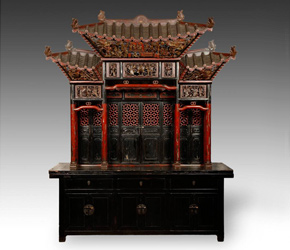 |
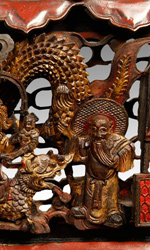 |
||
The magic words when it comes to cultural material are “ending or ended”. Pockets of cultural material are “discovered,” a market develops as they become collectible, and ultimately, the market cleans out the original material. This process can take months, years, decades, and even centuries or longer; and as the process unfolds reproductions emerge and price volatility ensues. There are many factors that influence the desirability of antique furniture such as aesthetics, age, condition, design, origin and provenance; however, it is rarity that ultimately has the greatest impact on value.
Today, times have changed and to a certain extent the tables have been turned. A great many Chinese antiques are finding their way back to China via sale at auction houses and by foreign dealers who collected it years ago. The Chinese are now actively buying back previously sold antiques; in essence, reclaiming their heritage. This has given way to new collecting opportunities in regard to pieces that may not be as old or rare, but still considered valuable by collectors, perhaps for its affordability. Disappearance should not be considered loss, but rather, a new beginning.
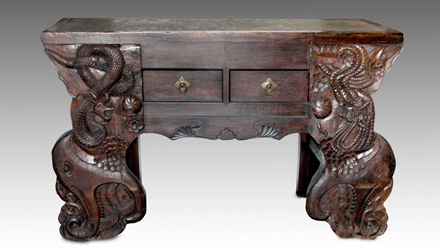 |
Download this Article: Now You See It, Now You Don't - The Disappearance Of Chinese Antique Furniture.pdf